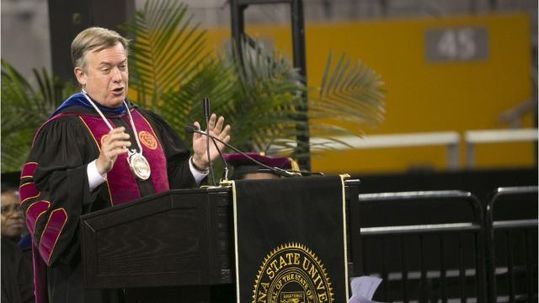Most in higher education understand the complexity of the daily work of college presidents. College presidents must balance internal and external concerns and stakeholders. Recently, the American Council on Education (ACE) released the long-awaited report, American College President Study 2017. The ACE president studies are the most comprehensive available and provide a wealth of insights into the presidency. In my third post in a series on the report (earlier posts considered demographics and the search process), I am going to consider the major findings of the ACE study and the implications for higher education. In today’s post, I will examine the daily work of college president to help provide background on the role of the president.

The American College President Study is based on survey responses from 1,546 presidents and chancellors from various types of higher education institutions.
This national survey of presidents is administered by ACE and offers the most detailed and long standing information regarding presidents.
The survey regularly captures demographic data, career trajectories, and the major duties and responsibilities in addition to more timely questions such as around political climate.
ACE’s report identifies 3 key areas to help improve our understanding of the presidency: challenges, uses of time, and supportive constituencies.
Challenges
Presidents that responded to ACE’s survey reported that their top 3 challenges were never having enough money (60.8%), faculty resistance to change (45%), and a lack of time to think (44.1%).
While the problems involved in money and faculty resistance might take on a different light in today’s environment, this concerns are long-standing among college presidents.
The challenge of finding time to think seems particularly insightful and concerning. We want and need our college presidents to be accessible and available to stakeholders. Yet, we also need presidents to be the strategic leaders and decision makers on campus.
While presidents can’t spend every morning just sitting and thinking, institutions need to find ways to give presidents opportunities time to think and consider the future of the institution.
Uses of time
Particularly given the funding crisis many institutions have faced in recent years, money issues dominant how president’s spend their time. The most time intensive part of the daily work of college presidents are:
1) Budget/financial management (64.0%)
2) Fundraising (58.1%)
3) Managing a senior-level team (42%)
4) Governing board relations (33.2%)
5) Enrollment management (31.8%)
Beyond the leadership role of managing the senior leadership team and the board, presidents focus on raising money (fundraising and enrollment) and managing money.
By comparison, accreditation issues occupied 11.1% of time and shared governance, 13.8%.
In many ways, this is understandable as other senior leaders especially the provost help manage internal and academic issues.
On the other hand, the continued emphasis on financial matters raises questions about how desirable the job of president may be for provosts and academic types. Moreover, if the job is about money, maybe the trend of hiring non-academic campus executives makes a great deal of sense.
Who’s got my back?
Presidents take heat from a number of sources. Students, faculty, and the athletics department pressure presidents from inside the institution. Externally, state legislators, community leaders, and the media have expectations on presidents.
When a president is looking for a supportive constituency, who can they turn to for help?
Presidents reported they receive the most support from their provosts (55%) followed by president’s office staff (47%) and development/fundraising (35%).
These statistics raise two issues in my mind for further consideration.
First, how do slightly less than half of president’s feel their own staff are one of their most supportive consistencies? If you can’t get your own staff on board, you need a new staff!
Second, the role of the provost deserves more attention as we think about leadership in higher education. Increasingly, presidents are looking to bring in their own senior leadership teams including the provost.
If presidents feel the provost is their most important supportive constituency, perhaps we need to more formalize the provost almost like the president’s running mate.
We figured out pretty quickly that the president of the United States needed to select their own vice presidents.
Maybe college presidents need the same privilege.
This is a hard job
No matter how you look at the daily work of college presidents, these people have a hard job. It is easy to criticize a college president and plenty of them make decisions that deserve to be held to account. However, I think all of us in higher education would also benefit from thinking about the challenges and complexity of the modern college presidency.

